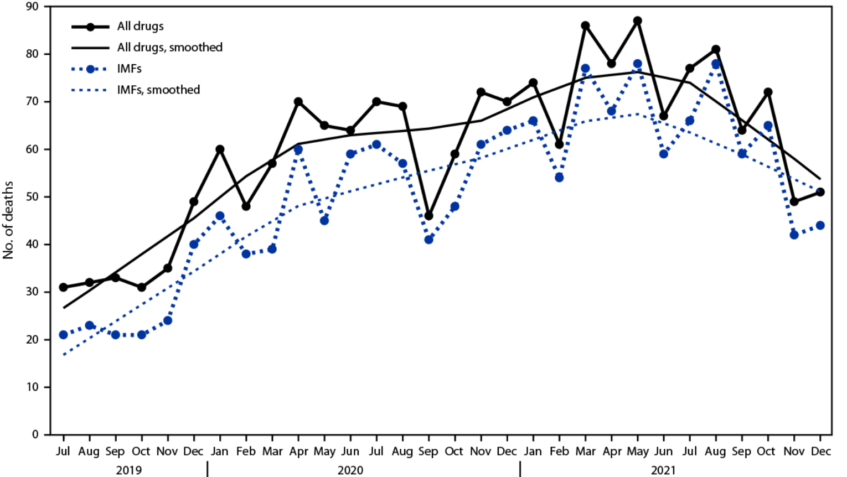Despite national data reporting youth substance use declined or held steady since the COVID-19 pandemic, youth overdose deaths rose dramatically highlighting how dangerous engaging in substance use is today. From 2019 to 2020, there was a 94% increase in overdose deaths among teens ages 14 to 18 and from 2020 to 2021, a 20% increase in overdose deaths occurred.
A new analysis on the trends and characteristics of overdose deaths among youth ages 10 to 19 from July 2019 to December 2021 found that 84% of these deaths involved the very powerful drug fentanyl and a very low number of these youth had previous (11%) or current (3%) substance use disorder treatment experience or had documented opioid use history (35%). These findings along with the observation that less than 8% had documentation of injection and almost a quarter of overdose deaths were related to counterfeit pills (which is likely underreported), strongly suggest that overdose deaths in youth are not being driven by riskier use and emphasizes the urgency to prevent any substance use by youth.
Other striking findings indicated that the majority of overdose deaths (60%) occurred at the youth’s home and 41% had documented mental health history. Here is a breakdown of the trends and characteristics discovered:
- In 32 jurisdictions with trend data available:
- 65% increase overall in number of monthly overdose deaths
- Median monthly overdose deaths increased 109% during July – December 2019 to July – December 2021 and during same period, deaths involving fentanyl increased 182%
- In 47 jurisdictions with demographics and drug characteristics data available:
- 69% male
- 60% non-Hispanic whites
- 91% involved at least one opioid
- 84% involved fentanyl
- 59% involved fentanyl with no opioid or stimulant
- 10% involved prescription opioids
- 25% involved stimulants
- 4% involved no stimulant or opioid
- In 43 jurisdictions with data on circumstances:
- 60% of overdoses happened at the youth’s home
- 67% happened with someone in the home
- 60% had no pulse when emergency medical responders arrived
- 30% were administered naloxone
- 24% had documented ingestion, 24% smoking, 23% snorting, 8% injection
- 25% had evidence of counterfeit pills
- 35% had reported opioid use history
- 14% had previous overdose
- 11% received substance use disorder treatment
- 3% in current treatment
- 41% had reported mental health history
To read the full report, visit: https://www.cdc.gov/mmwr/volumes/71/wr/mm7150a2.htm. If you know a youth that is struggling with mental health or substance use, contact the crisis line at 988. Encourage youth to adopt the One Choice health goal of no use of any alcohol, nicotine, marijuana, or other drugs by youth under age 21 for reasons of health. Visit www.onechoiceprevention.org to learn more.




